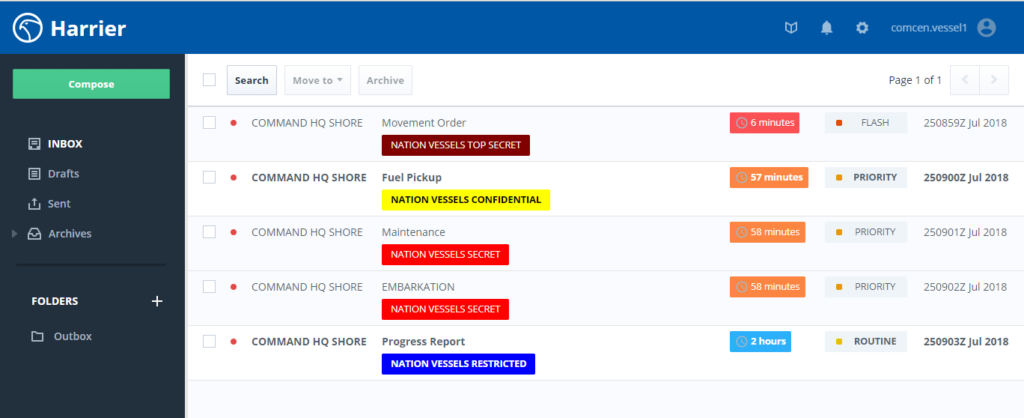

Harrier, Isode’s Email Messaging client, provides a modern user-interface to secure messaging on Web. Harrier can be used in both General Purpose and Military deployments.
Configurations
Harrier is sold in two configurations:
- Harrier (M-Switch): For use with Isode server products, uses SMTP for message submission to M-Switch SMTP and IMAP for message access from M-Box.
- Harrier (Exchange): For use with Microsoft’s Exchange MTA, uses SMTP for message submission and IMAP for message access. No Outlook licenses are required.
Architecture
Harrier comprises a web interface, compatible with modern browsers, communicating to a Harrier web server using HTTP (REST) and Web Sockets and making use of making use of JSON, CSS, and HTML. The diagram below shows how both Harrier configurations can be deployed and how the addition of an M-Switch Gateway, to perform message conversion, allows Harrier to deployed as part of SMTP, X.400, MMHS over SMTP, ACP127, STANAG 4406 networks and constrained network (low-bandwidth/high-latency) variations.

The Harrier web server, MTA and gateway components can be deployed co-resident on a single box or separately depending on architectural choices.
Key Features
Harrier can operate as a general purpose SMTP/IMAP client, providing a high performance easy to use Web interface to an SMTP/IMAP service. In addition to general purpose email capabilities, Harrier includes features that are not generally available in standard email clients, which make it ideal for use in military environments.
Security Labels
Support for Security Labels is based on RFC 7444 “Security Labels in Internet Email”, label selection is driven by the Security Policy, restricting Harrier to selecting a security label that is appropriate for the intended recipient(s). Multiple security policies can be supported, allowing the user to select the appropriate policy for the message/deployment.
Time-Related Controls
Harrier allows users to set time-related controls. The reply by, expires on and deliver by controls allow the prioritization of message handling.
SICs and Message Type Support
Subject Indicator Codes (SICs) and Message Type can be set and displayed. The values used are stored and managed centrally and shared between clients.
Recipient Capability Checking
Harrier identifies message recipients from an LDAP Directory (Isode’s M-Vault or Microsoft’s Active Directory can be used) and when recipient capabilities are stored in the directory Harrier will ensure that the message is compatible with those capabilities, which can include:
- Support of Attachments
- Maximum Line Length
- Maximum Message Size
- Supported Character Sets
Capability checking is particularly important when using Harrier as an interface to older messaging standards, such as ACP127.
General Purpose Military Features
In addition to the features above, Harrier supports a wide range of general purpose features useful for military messaging, including:
- Action & Information Recipients, with associated priorities
- Exempted Recipients
- Use of Read Receipts to indicate message responsibility
- Default use of TLS for all connections
When used in ACP127 mode addresses are presented as ACP 127 RI (Routing Indicator) and PLA (Plain Language Address) with SMTP addressing hidden from the user, lines are limited to 69 characters, character set is restricted to ITA2 or IA5 and Attachments are disabled.

